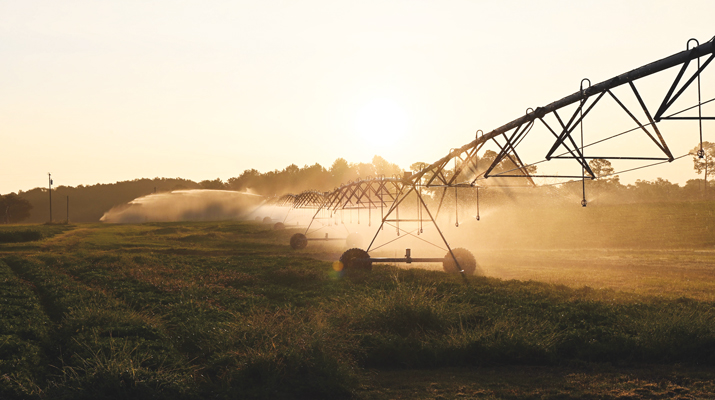What does it take to launch into autogas?
Kyle McCalla is one of 19 propane retailers in the room, and at 27 years old he might be the youngest. McCalla is here, like the others, because he wants to know what it will take to get his company involved in propane autogas.
Surely, he’s excited about the market’s potential and the forecasts for autogas. ICF International, for example, is predicting annual sales of more than 40,000 propane-powered on-road vehicles by 2020. Subsequently, ICF International is expecting a related increase in propane consumption of more than 400 million gallons by that same year.
Some predictions are mind-boggling, and they’ve driven retailers like McCalla here today. McCalla, a commercial energy specialist at United Landmark LLC in Lancaster, Ohio, hasn’t made an autogas-related sale to this point. He’s had conversations with a few school districts that are considering converting buses, and he has contacts that can help United Landmark branch into propane-powered mowers.
Still, McCalla has more questions than answers. And judging from the room full of retailers on this day, so do the others.
“Basically the only thing standing in our way [from autogas] is ourselves,” says McCalla, in a phone interview following the Propane Education & Research Council’s (PERC) Marketer Technology and Sales Training seminar on propane autogas, hosted at Bergquist in Toledo, Ohio. “I want our company to be the source of information for our customers. If I go to a customer I want to have an answer, and if I don’t have an answer I want to be able to get back to them quickly.”
Getting started
The biggest hurdle in McCalla’s way is establishing a customer base. Other retailers likely face this same challenge. Fortunately for them, much of the day’s discussion centers on how to make a successful sale.
One avenue to start the sales process is, of course, over the phone. How should a call start? What shouldn’t retailers say? To find some answers, retailers in this classroom are asked to huddle in small groups.
A group of seven retailers huddles in a corner and shifts into a conversation about alternative fuel tax credits. A couple of retailers in the group see these as a key talking point to get a potential customer’s attention.
“If [customers] are not aware of them, bring them up to speed on them,” says Dave Bertelsen, the national product manager at Valley National Gases.
Bertelsen goes on to tell the group a success story about how he had a contact who led him to a meeting about propane-powered vehicles with a school board. One key to the initial sale was vendor support, Bertelsen says.
His vendors were able to answer some of the customer’s more technical questions.
“A lot of our different vendors are more than willing to come with us to meetings,” he says. “A high-pressure pump is needed to fill the new liquid-injection [equipment]. It’s not like the old days, and that’s why it’s nice to partner with one of your vendors.”
Turning the conversation
Once the groups disperse, retailers are asked to role-play in an autogas-related sales call scenario. McCalla volunteers and makes a pitch to the seminar’s instructor, who acts as a prospective customer with fleet vehicles.
“I think I have a good alternative to diesel or gasoline,” McCalla says at one point.
The instructor responds with perhaps the obvious question: How much is a propane-powered vehicle? The question is legitimate, and one most retailers should be prepared for. So how should they respond?
Bertelsen takes a stab at a response in a different role-playing scenario with the seminar’s instructor, who acts as a school board member and a prospective customer. Bertelsen starts his pitch with a statement that notes all school districts are pressed for cash. The role-playing instructor responds that he’s heard propane-powered vehicles are more expensive than some diesel vehicles.
Again, back to price. But Bertelsen has an answer.
“Yes, but there are some government incentives, and we have the expertise to come in and talk about lower emissions, less cost for maintenance and savings you’re going to have in fuel,” Bertelsen says. “If you’re looking at diesel at $4 per gallon, you might cut that with propane.”
Once this role-playing scenario is over, the instructor provides some analysis of the pitch Bertelsen made. The instructor points out that Bertelsen steered the conversation toward return on investment to avoid an upfront conversation about price that could lead to sticker shock. Also, Bertelsen offered experts to service the school district, and he immediately mentioned how the price can be reduced with government rebates.
An unfortunate dynamic exists, the instructor adds, in that salespeople are often moved too quickly from their initial greeting with a customer to an abrupt question about the product’s price. Time isn’t ample for many prospective customers, of course, so it’s critical for some of them to race ahead to price.
A key step in successfully making a sale, the instructor says, is to perform a needs analysis – and, perhaps more critically, to establish a conversation around the prospective customer’s needs before they hang up the phone.
Selling something that’s relatively unknown, such as autogas, elevates the challenge salespeople face.
“If we can get started and get in with a school, I think that’s going to be a good way to get our name out there,” McCalla says. “Word of mouth is huge, so we need to get into that first school district and tell them how much they can save and about the service we can offer.”
Not saying the wrong thing
Allen Dunlap, who sits in another area of the classroom, agrees with McCalla about word of mouth being a useful marketing tool for autogas. But just as propane retailers can benefit from word-of-mouth marketing, they can be set back if unsatisfied customers tell the world how their propane retailer did them wrong on autogas.
A few retailers probably find themselves in this situation already, having rushed into the market unable to properly supply or service customers. Dunlap doesn’t want to suffer their fate, and that’s a reason why he’s here learning about autogas.
“I want to better service clients and future clients,” says Dunlap, who is both president of Linden’s Propane Service Inc. and the Ohio Propane Gas Association. “I don’t want to make a misstatement and give the industry a black eye. You’re never going to get a return sale if you don’t do it right the first time.”
So far, Dunlap hasn’t had autogas customers knocking down his door. He’s had a few people call with an interest, but where Dunlap is based in LaGrange, Ohio – southwest of Cleveland – autogas is very much still in its infancy.
Dunlap sees opportunity to speed up autogas’ development in the area, but he believes retailers like himself need to be properly trained how to sell and service it.
“I feel customers know enough to get us in trouble,” Dunlap says. “They’re coming to us thinking we’re the industry professional.”
Propane retailers are the obvious place to turn for all things autogas, but Dunlap says even the most seasoned industry veterans need more education because technologies have vastly changed.
“We’ve dealt with pumps for 20 years, and this is similar yet dissimilar technology because of different pressures,” he says. “A lot of us are just ignorant. A lot of the education has not gotten into the field.”
Besides education, logistics are one of Dunlap’s autogas-related concerns.
“There have been success stories, but our sales window goes down May to October,” he says. “A school needs a bus in mid-August. We’ve got the cart in front of the horse in some cases, and I think there are some issues. We’ve got to get with the suppliers.”
An investment in autogas is also a scary proposition for some retailers, Dunlap says.
“We used to get a propane dispenser for $1,200,” he says. “Now, you’re talking $8,500.”
For more information about marketer training sessions, visit www.propanecouncil.org/MTST.
















